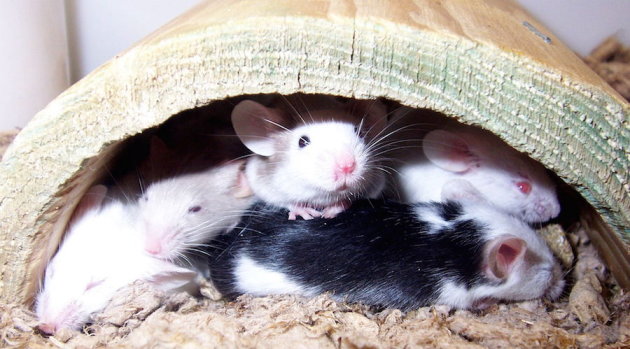Why would a group of researchers venture into the realm of something that seems like a scene straight out of The Planet of the Apes? Researchers are hoping to better understand human brain diseases by studying them in living mouse brains. The hybrid brains retain a mouse’s own neurons, which constitute about half of their brain cells. But almost all of their glial cells, which support the neurons, are human.
Rochester’s Steve Goldman told Andy Coghlan of New Scientist., “It’s still a mouse brain, not a human brain, but all the non-neuronal cells are human.”
Researchers took the immature glial cells from donated human fetuses and injected them into mouse pups. The cells developed into star-shaped glial cells known as astrocytes. 300,000 human cells were injected into each mouse, but 12 months later that number had increased to 12 million. The mouse’s own glial cells had been driven out by human astrocytes which are up to 20 times larger than those in mice.
Researchers have compared the project to “ramping up” the memory in your computer.
What was the outcome? Researchers have found that the supermouse is much smarter than traditional mice. The study found a fourfold improvement in memory.
In another experiment, Goldman’s team found that when immature human glial cells were introduced into mouse pups that were defective in producing myelin, some of the human glial cells developed into oligodendrocytes. Those are the brain cells that play an active role in the formation of myelin.
Researchers could use their findings to treat diseases of the brain such as multiple sclerosis where damage to the myelin sheath is implicated.
The group is still facing ethical challenges as they continue to implant human brain cells into mice. Some groups have called the creation a “Frankenmouse.” The group says the “supermouse” is still just a “mouse and not a human.”
The results from the full study are published in the sJournal of Neuroscience.
[Photo Credit: Polarqueen]
This article was syndicated from Business 2 Community: Scientists Implant Human Brain Cells In Mice To Create ‘Supermouse’


No comments:
Post a Comment